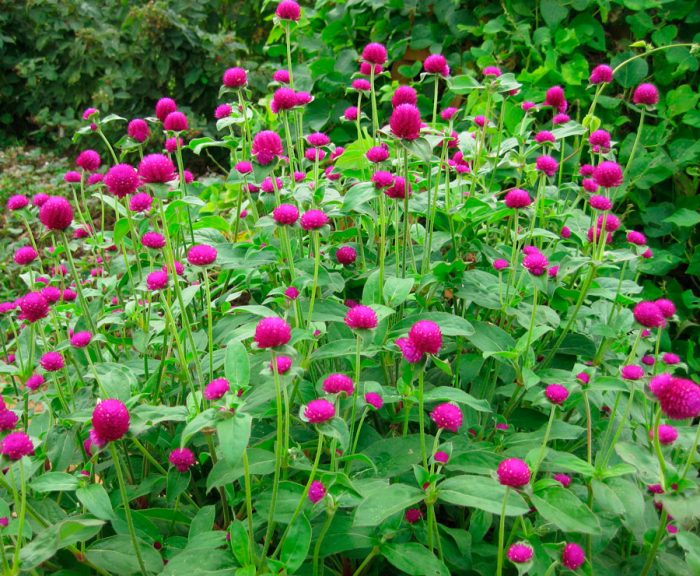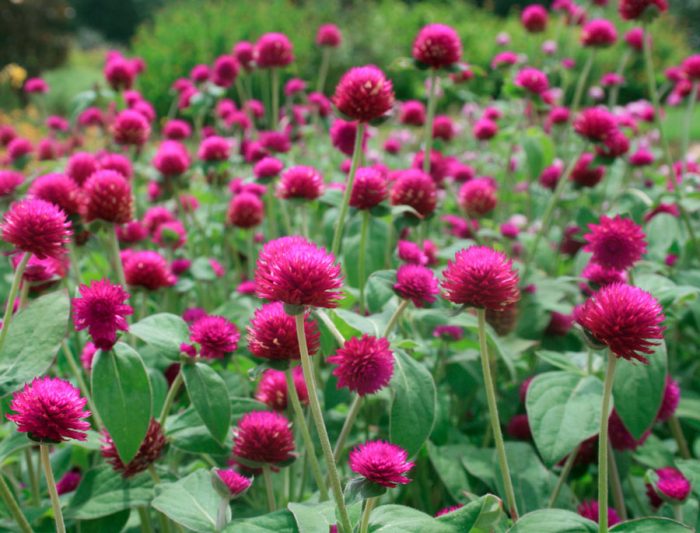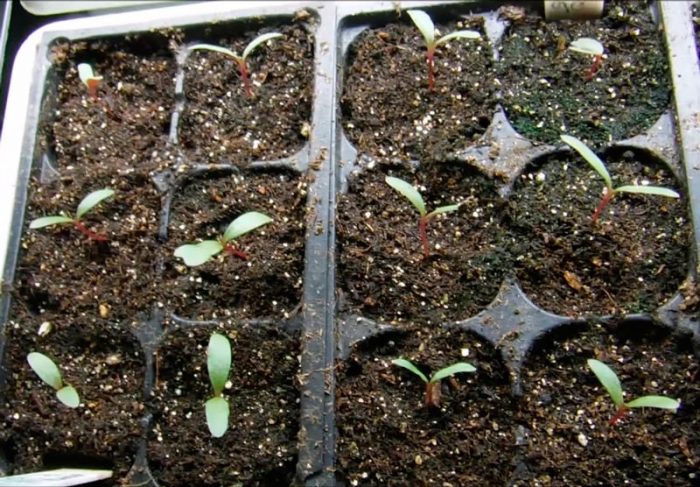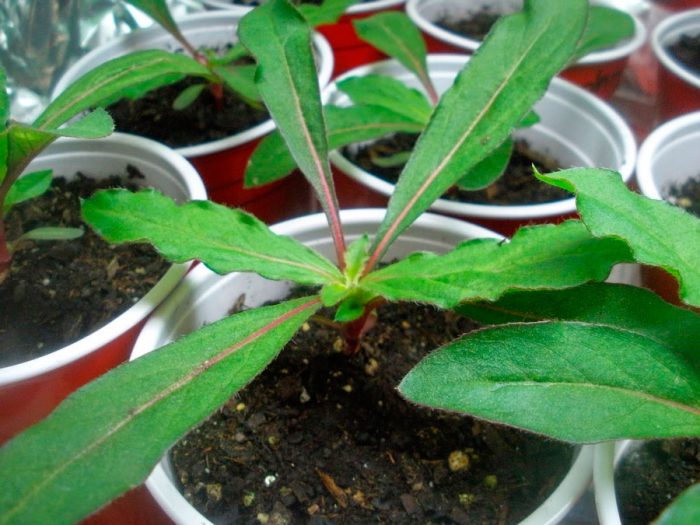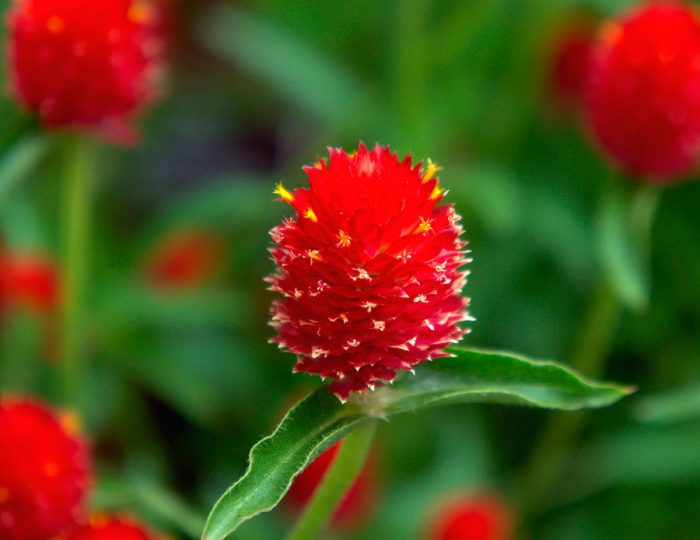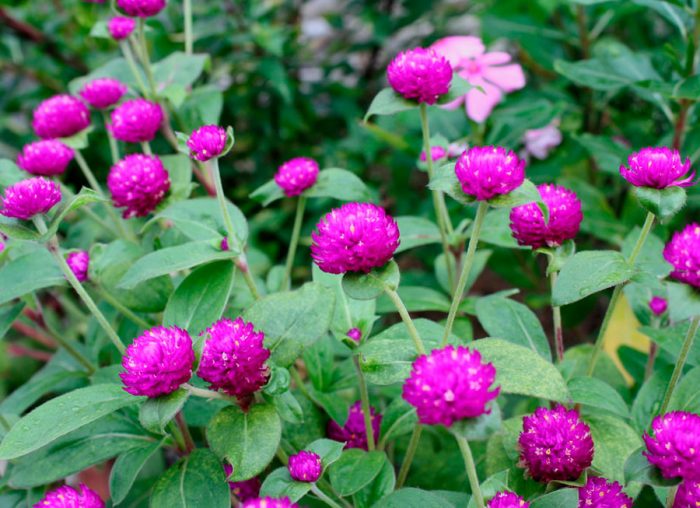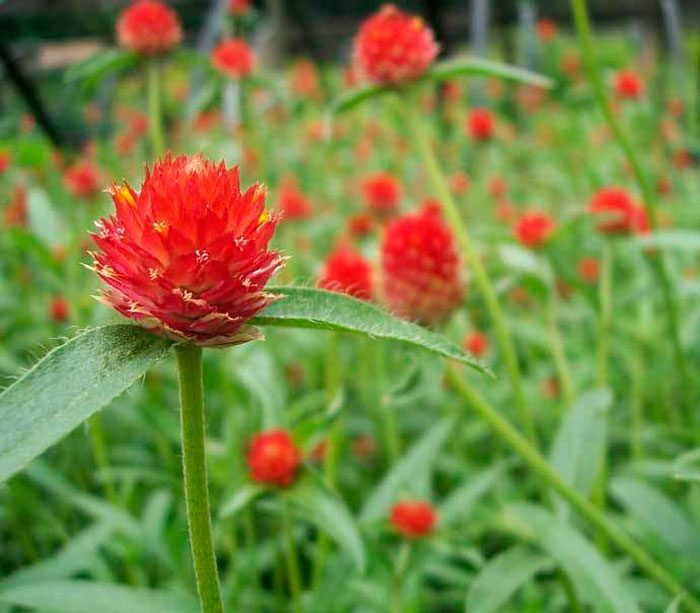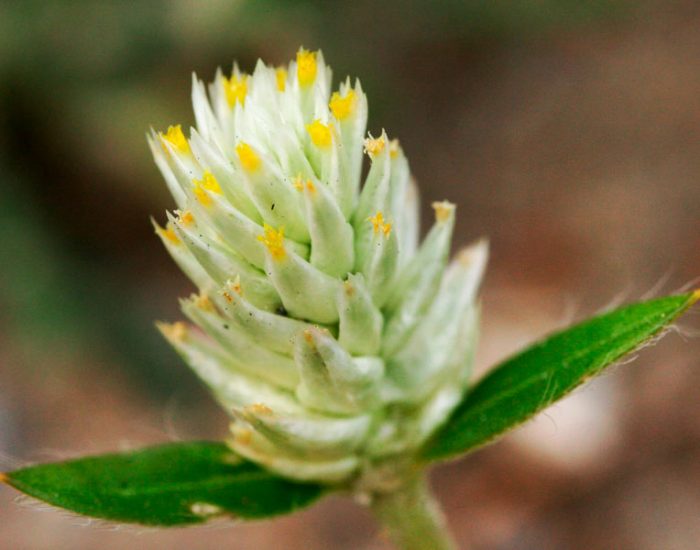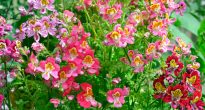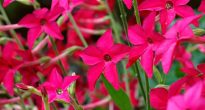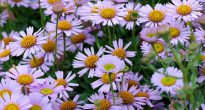The flowering plant Gomphrena is a member of the Amaranth family. In nature, it can be found in the tropical zones of the Southern and Northern Hemisphere. Delachen, who was a French botanist, describing this culture, pointed out that Pliny gave the name to Gomfren. Then it was included in the "Species plantarum" by Carl Linnaeus just under this name. The largest number of species of such a plant is found in South America. This genus unites about 100 species, some of which are cultivated by flower growers as indoor plants.
Content
Features of gomphrene
Gomphrene is represented by herbaceous plants, which can be perennials and annuals. Their stems are erect or ascending. Entirely opposite leaf plates are petiolate or sessile. The capitate inflorescences consist of flowers painted in red, pink, blue, white, purple, lilac or yellow, often their color is uneven. The fruit is a non-opening achene, which contains smooth flattened seeds.
In middle latitudes, perennial gomphrens are cultivated as annuals. Such a plant is unpretentious, and it has high decorative qualities.
Growing gomphren from seeds
Sowing time for seedlings
In mid-latitudes, gomfrena is grown only through seedlings. The fact is that seeds sown in open soil may not give seedlings, and the ripening period in such a culture is quite long. Sowing seeds for seedlings is carried out in the first days of March.
However, the seed needs compulsory pre-sowing preparation, and it lasts a week and a half. For three days in the morning, the seed must be poured with lukewarm water, before that it is poured into a glass jar. On the fourth day, the water together with the seed must be drained onto a sieve, it must be thoroughly rinsed using running water. Then, in the washed jar, the seed must be folded, after which it is closed with a nylon lid and removed to the refrigerator shelf, intended for vegetables, where it must stay for 7 days.
Sowing rules
A suitable substrate should consist of coarse sand or vermiculite, as well as a versatile soil for vegetable seedlings. Water the substrate well, as a result it should become damp, but the soil should not be oversaturated with water. This soil mixture must be filled in containers, or better cassettes. Then press down the soil mixture and water it again, this must be done, because the next watering will not be carried out soon.
The cold seed must be removed from the jar, then the seeds are evenly distributed over the surface of the substrate, after which they are pressed against the soil mixture. From above, the container must be covered with glass or film, then it must be removed to a well-lit place, while the light should be bright and diffused, and the air temperature in the room should be about 20-22 degrees. The first seedlings should appear after 15-18 days. To accelerate the germination of seeds, it is necessary to apply the bottom heating, in this case the seedlings will appear after three days.
As soon as the seedlings appear, the shelter must be removed. If the seedlings grow in a common container, then 15-18 days after their emergence, the seedlings must be cut into individual containers reaching 50-70 mm in diameter or into larger pots. After the cut-down plants take root, they should be watered with a solution of mineral fertilizer of low concentration. The soil should be slightly moist, but it should not contain an excessive amount of liquid, otherwise the plants may die due to the black leg, this fungal disease affects the bushes during the seedling period. When the gomphrena is watered, it is necessary to carefully loosen the surface of the soil mixture around the bushes. If the first signs of the disease are noticed, all the affected bushes need to be pulled out, and the surface of the soil mixture is covered with a layer of wood ash, while the flowers should not be watered for a while.
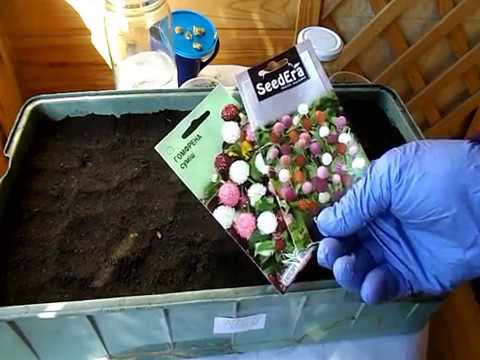

Watch this video on YouTube
Planting gomphren in open ground
What time to plant
Gomphrenic seedlings are transplanted into open soil only after the return spring frosts are left behind, while warm weather should be established, and the soil should be warmed up. As a rule, this time falls on the last days of May or the first days of June. For growing gomphrene, you should choose a well-lit area that has reliable protection from drafts and gusts of wind. The soil should be neutral and not too nutritious.
Landing rules
Before proceeding with the planting of seedlings, the site will need to be dug up, but the soil is not fertilized. After the surface of the site is leveled, it is necessary to make planting pits, while when planting tall varieties, a distance of 30 to 35 centimeters must be observed between them, and between the undersized bushes it will be enough to leave from 15 to 20 centimeters. The pits in depth should be such that the plant will fit in them along with a lump of earth. The plants must be passed into the prepared holes, they must be placed in the center, while trying not to injure the root system, and the free space in the holes is covered with earth. Around the planted plants, the soil is compacted and watered.
Gomphrene care in the garden
It is relatively easy to grow gomfren in your garden. Such a culture is distinguished by its unpretentiousness, therefore it is very easy to take care of the gomphrene. Bushes need timely watering, weeding, feeding, loosening the soil surface. For plants to be nice and tidy, they need regular small pruning. Such a flower is suitable for cutting, and it is noteworthy that the more often you cut the flowers, the thicker the bush and the more magnificent the flowering will be.
How to water and feed
Watering the bushes is necessary only during prolonged drought, while this procedure should be moderate.It should be remembered that such a crop is drought tolerant, so if you skip watering, then there will be nothing to worry about. However, water stagnation in the ground should not be allowed, since this can lead to fungal disease, especially if cool weather sets in. If it rains regularly in the summer, then such a flower can not be watered at all, however, in this case, experts recommend that after the rain passes the next day, it is imperative to loosen the soil surface and pull out the weeds that have appeared.
You need to feed such a flower very carefully, since there should not be too many nutrients in the soil. For example, if there is a lot of nitrogen in the soil, then because of this, the active growth of green mass will begin, which will have an extremely negative effect on flowering, which may not occur at all.
Diseases and pests of gomphren
Gomphrene can only get sick if there is stagnation of fluid in the soil. The fact is that this culture has a very high resistance to diseases and pests. In rare cases, aphids can settle on it, which move to bushes from other plants. To get rid of aphids, you need to use insecticides, while all folk remedies in this case will be extremely ineffective.
Types and varieties of gomphren with photos and names
It has already been mentioned above that the genus Gomfren consists of a large number of species, but only 3 of them are cultivated by gardeners.
Gomphrena globosa (Gomphrena globosa)
The height of the bush is 15-40 centimeters. Entirely short-peaked leaf plates have pubescence, due to which they have a bluish color. Globular capitate inflorescences reach 40 mm in diameter, they can be colored pink, lilac, purple, red, white or crimson. Bushes bloom in July, and bloom before the onset of the first frost. Popular varieties:
- Bright Border... The height of the bush is about 0.3 m, the flowers are painted in a variety of shades of pink, up to carmine pink.
- Buddy... In this series, the bushes are about 15 centimeters high, while their flowers are colored purple, white or pink.
Other popular varieties are: Globoza, Raspberry Berry, Fireworks, Pompon and a series of Pixie mix and Gnome varieties.
Gomphrena haageana, or gomphrena golden-flowered
This species has been cultivated quite recently. It is similar to globular gomphrene, but its inflorescences are larger and have an orange and red color. It is distinguished by its thermophilicity, and if the summer period is cold, then the bushes may not bloom at all.
Gomphrena serrata
Very often, this species is cultivated in suspended structures. Elongated leaf blades adorn the shoots that spread throughout the area, resulting in a carpet. Against its background, carnation-shaped inflorescences and orange-golden buds look very impressive.
The most popular variety is Pink Pinheads: the flowers are painted in a deep pink color, their color remains even after they dry up, in this regard, they are often used to draw up winter bouquets.
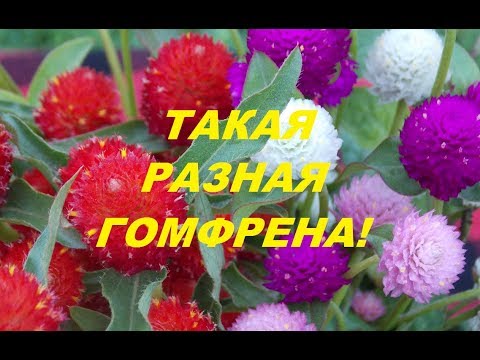

Watch this video on YouTube

